Nvidia RTX 5070 Ti: Performance Reviewed
When the Nvidia GeForce RTX 5090 was released, it didn't meet expectations with its modest performance boost over the RTX 4090, and at a significantly higher cost. However, the Nvidia GeForce RTX 5070 Ti, while not dramatically faster than its predecessor, offers a more budget-friendly option, making it the most sensible choice from the Blackwell series for those looking to upgrade without breaking the bank.
Priced at a base of $749, the GeForce RTX 5070 Ti is a formidable 4K graphics card that effectively competes with the pricier RTX 5080. It's important to mention, though, that the review model I received was an aftermarket MSI version, which costs a hefty $1,099. This is more than the $999 RTX 5080, so finding the RTX 5070 Ti at its base price of $749 is key to securing the best value, especially for those eyeing 4K gaming.
Purchasing Guide
The Nvidia GeForce RTX 5070 Ti will be available starting February 20, 2025, with a starting price of $749. Be aware that numerous versions will be available at higher price points. At $749, it's a solid investment, but its appeal diminishes as the price approaches that of the RTX 5080.
Nvidia GeForce RTX 5070 Ti – Photos
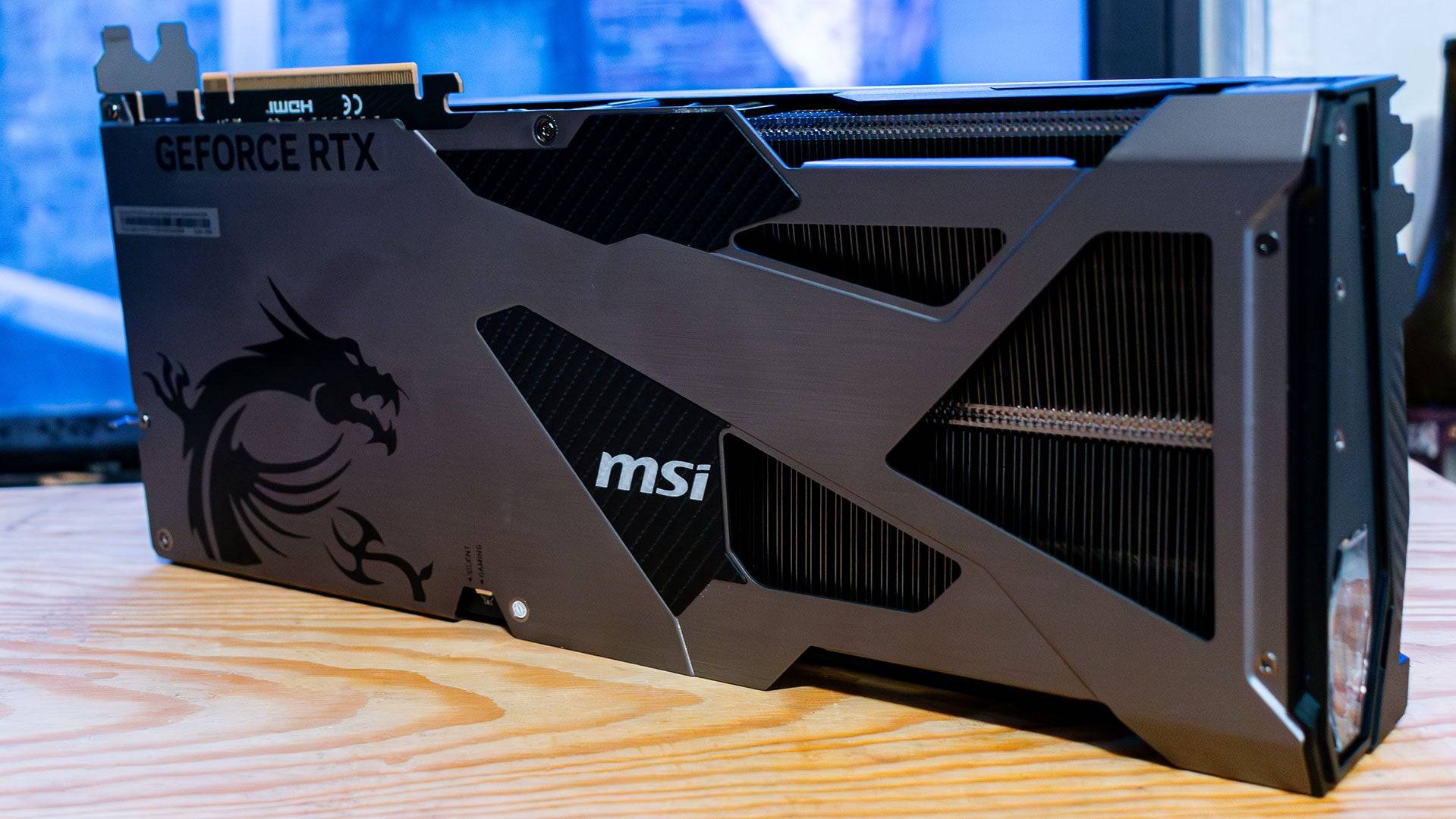
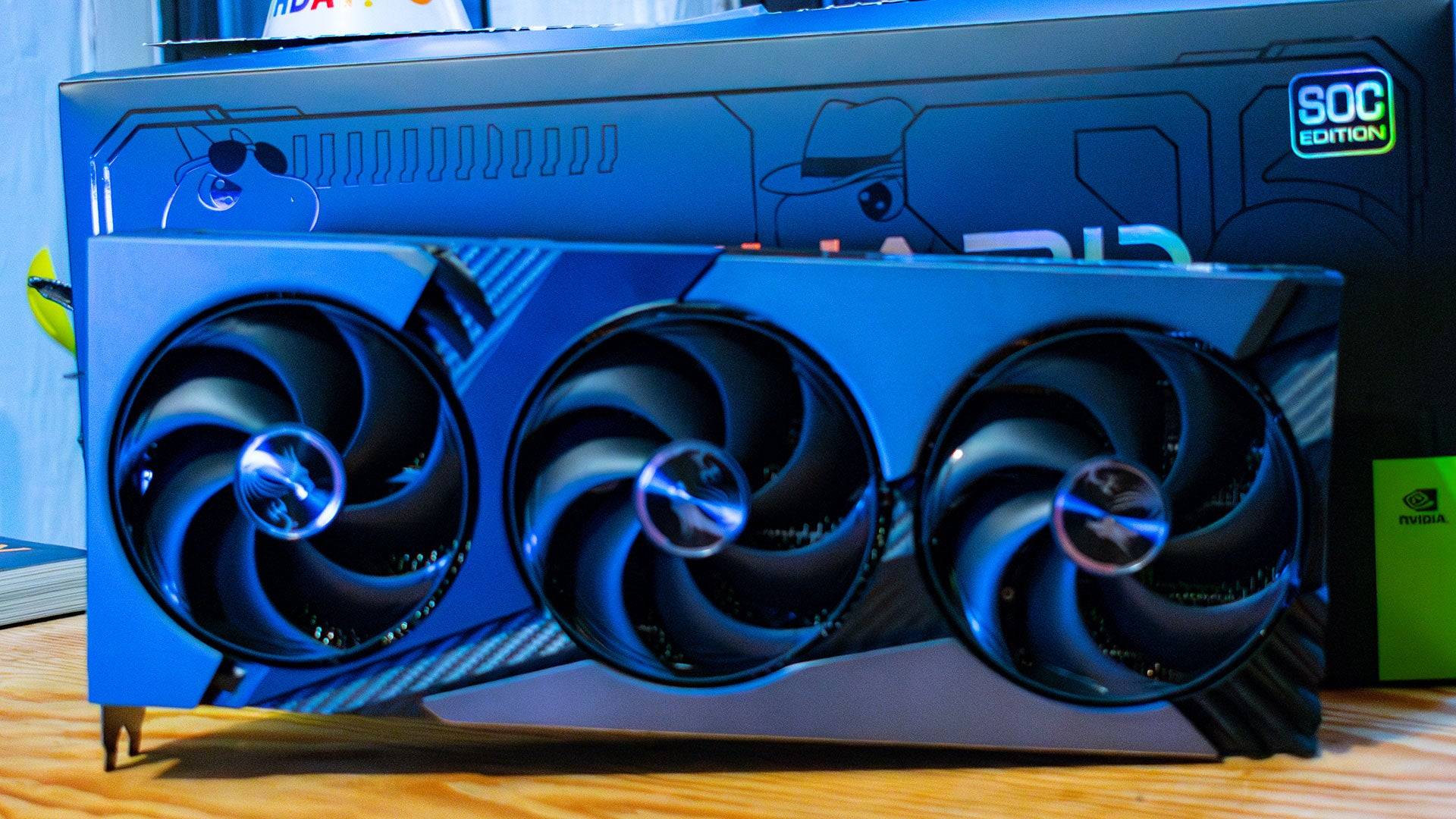 6 Images
6 Images
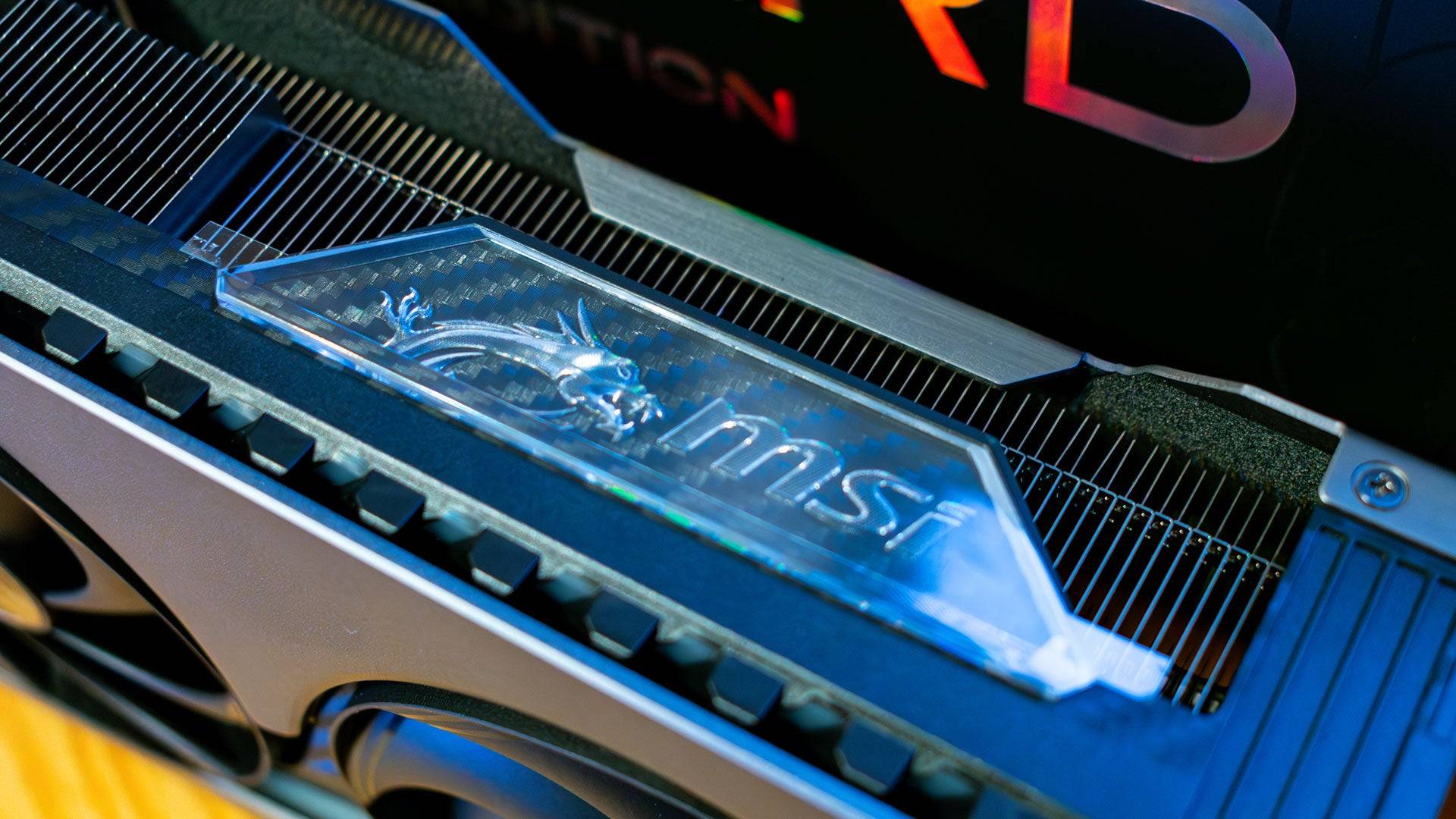
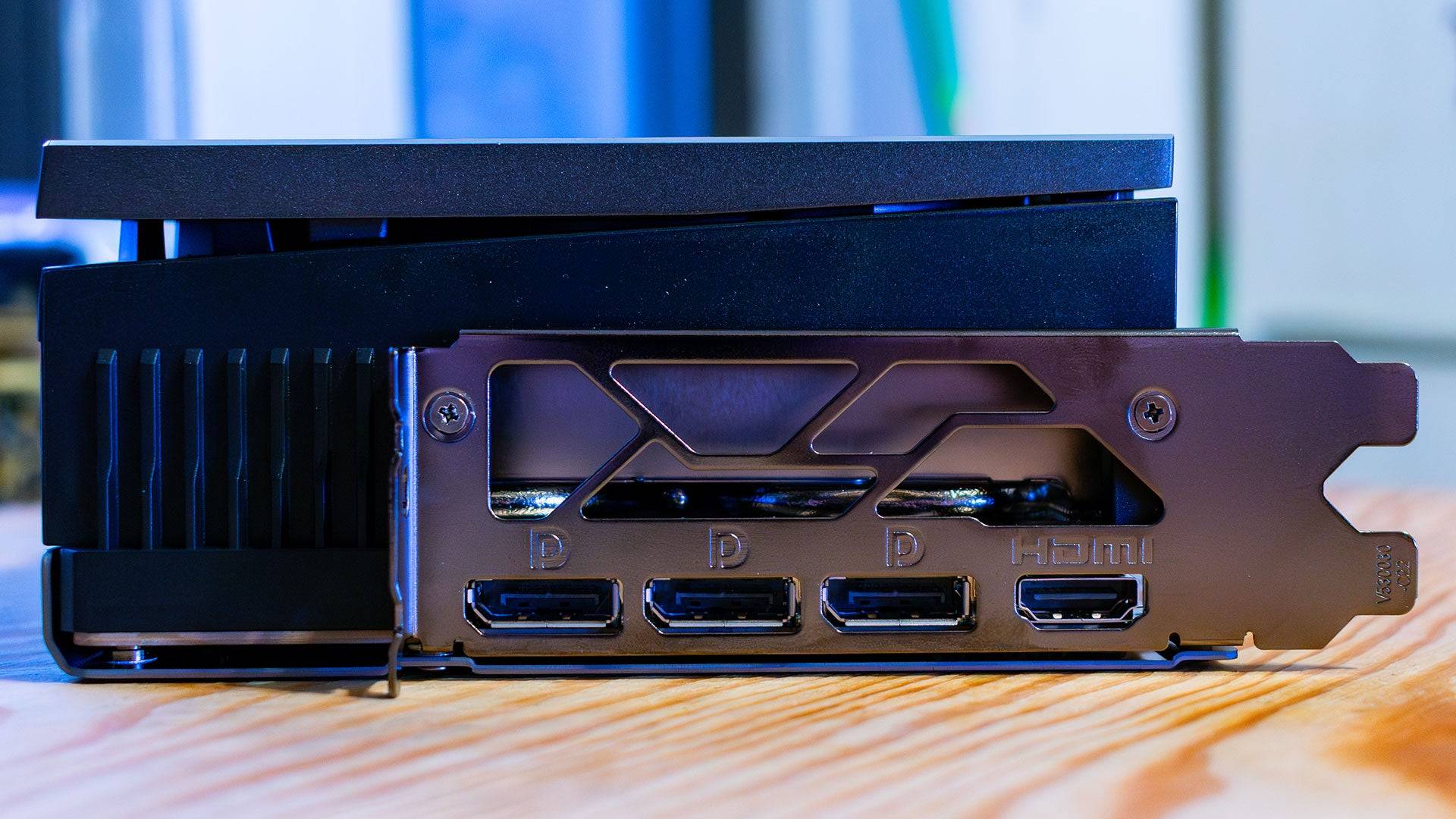

Specs and Features
The Nvidia GeForce RTX 5070 Ti is the third graphics card to feature Nvidia's Blackwell architecture, originally designed for AI-focused supercomputers. This architecture has been adapted for gaming GPUs, maintaining its AI-centric capabilities. Built on the same GB203 GPU as the RTX 5080, the RTX 5070 Ti has 14 of its streaming multiprocessors (SM) disabled, resulting in 70 SMs and a total of 8,960 CUDA cores, 70 RT cores, and 280 Tensor Cores. It also comes with 16GB of GDDR7 RAM, though slightly slower than its counterpart.
The Tensor Cores are crucial, as Nvidia leverages AI upscaling and frame generation to enhance performance. The Blackwell architecture includes a new AI Management Processor (AMP) to streamline workload distribution across the GPU, a task previously handled by the CPU. This improvement enhances the efficiency of technologies like DLSS and frame generation.
Nvidia has revamped DLSS to utilize a Transformer model instead of a Convolutional Neural Network, improving image quality by reducing ghosting and artifacts. DLSS 4 introduces Multi-Frame Generation (MFG), capable of generating up to three AI frames per rendered frame, though this increases latency, which Nvidia mitigates with Reflex technology.
With a Total Board Power of 300W, the RTX 5070 Ti is slightly more power-hungry than its predecessor, the RTX 4070 Ti. Nvidia suggests a 750W power supply, but for safety, an 850W PSU is recommended, especially for high-end models like the MSI Vanguard Edition reviewed here.

DLSS 4 – Is It Worth It?
The RTX 5070 Ti boasts a performance edge over its predecessor, but Nvidia's highlight for this generation is DLSS 4, particularly Multi-Frame Generation. This technology can significantly boost frame rates on high-refresh-rate monitors, though it doesn't drastically reduce latency.
MFG works by analyzing each rendered frame and using motion data to predict future frames, generating up to three AI frames per rendered frame. This can theoretically quadruple your frame rate, but in practice, the increase is less dramatic.
In Cyberpunk 2077 at 4K with Ray Tracing Overdrive and DLSS set to performance, the RTX 5070 Ti achieved 46 fps with 43ms latency. With 2x frame generation, this increased to 88 fps, but latency rose to 49ms. Using 4x frame generation, the frame rate reached 157 fps, but latency increased to 55ms, showing a 3.4x frame rate boost.
In Star Wars Outlaws at 4K with Max settings and DLSS set to performance, the RTX 5070 Ti delivered 67 fps. Enabling 2x frame generation raised this to 111 fps, and latency decreased from 47ms to 34ms thanks to Reflex. With 4x frame generation, the frame rate hit 188 fps, with latency increasing to 37ms.
Multi-Frame Generation can enhance visual smoothness on high-refresh displays, though it doesn't improve responsiveness. The latency increase is minimal if starting from a high frame rate, ensuring that games remain playable without noticeable lag or artifacts, especially at 4K with the RTX 5070 Ti.
Nvidia GeForce RTX 5070 Ti – Benchmarks
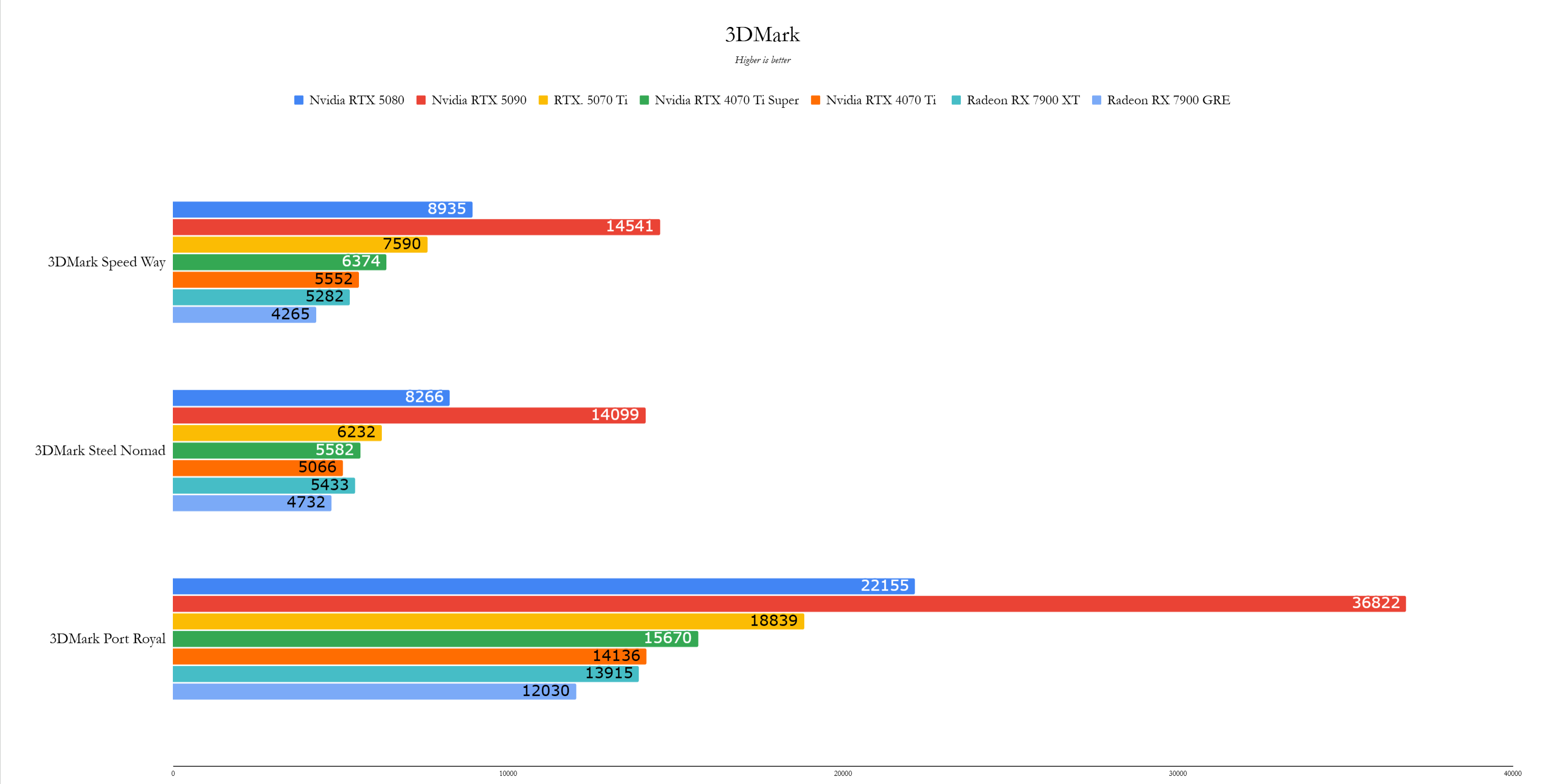
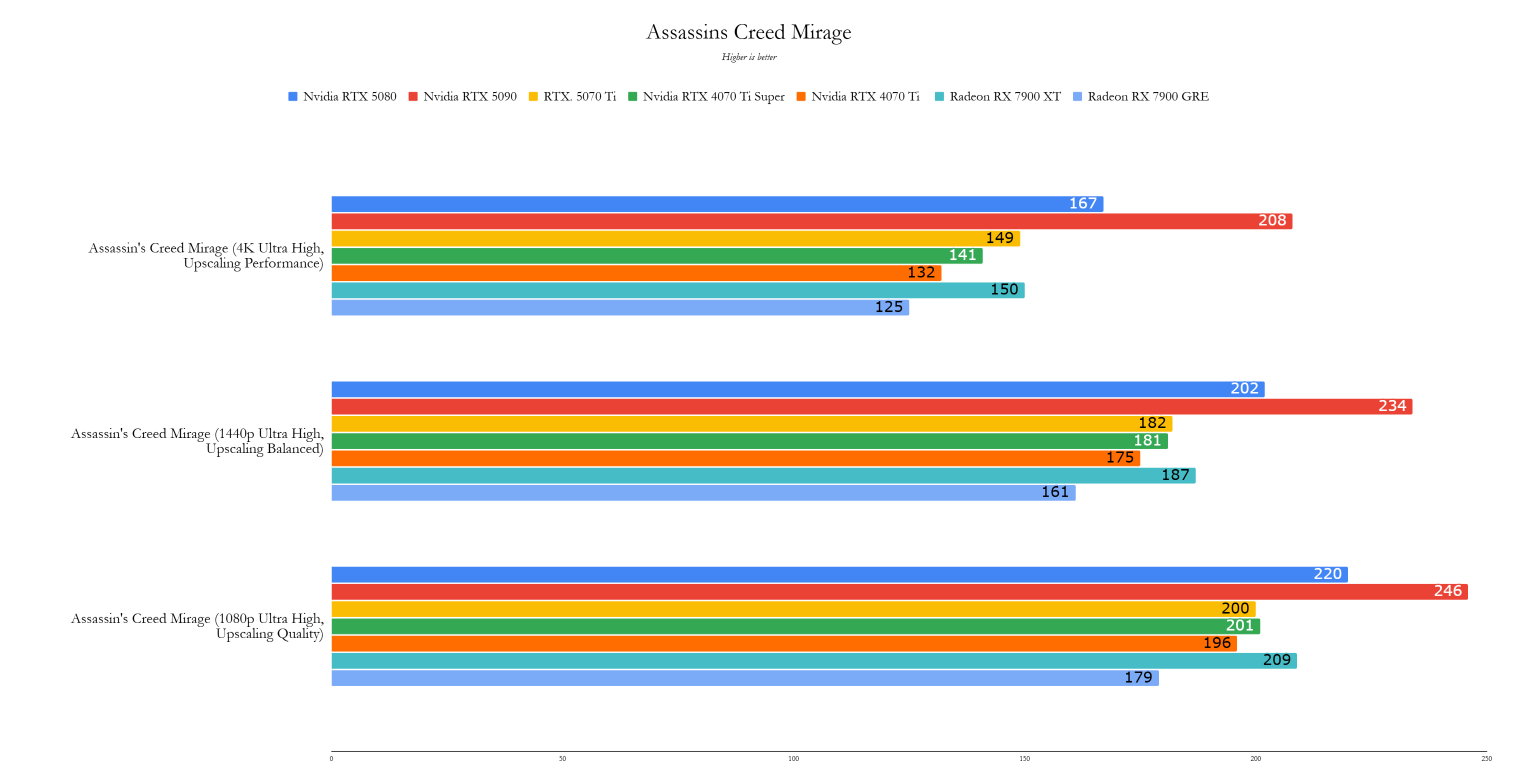 12 Images
12 Images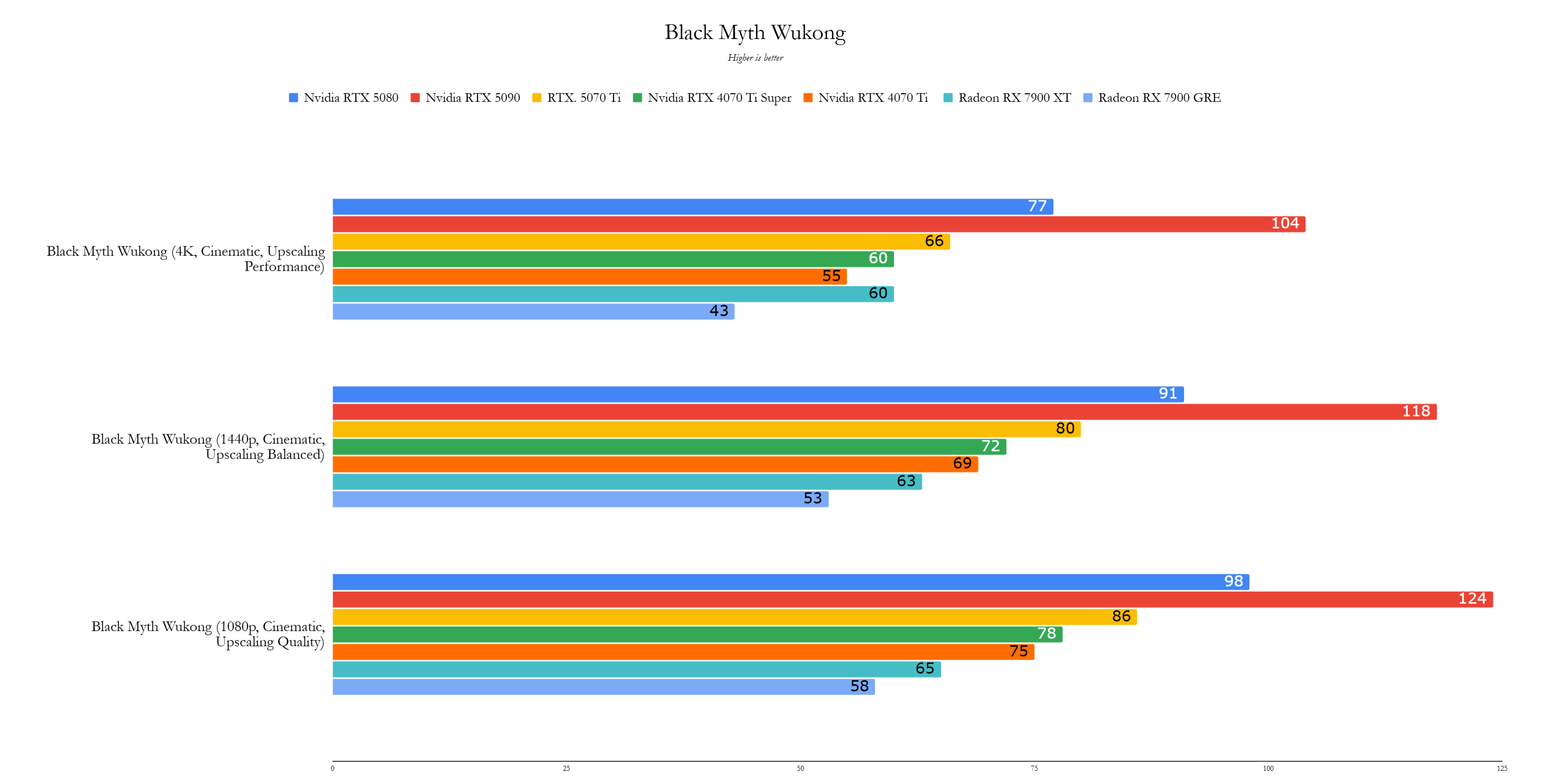
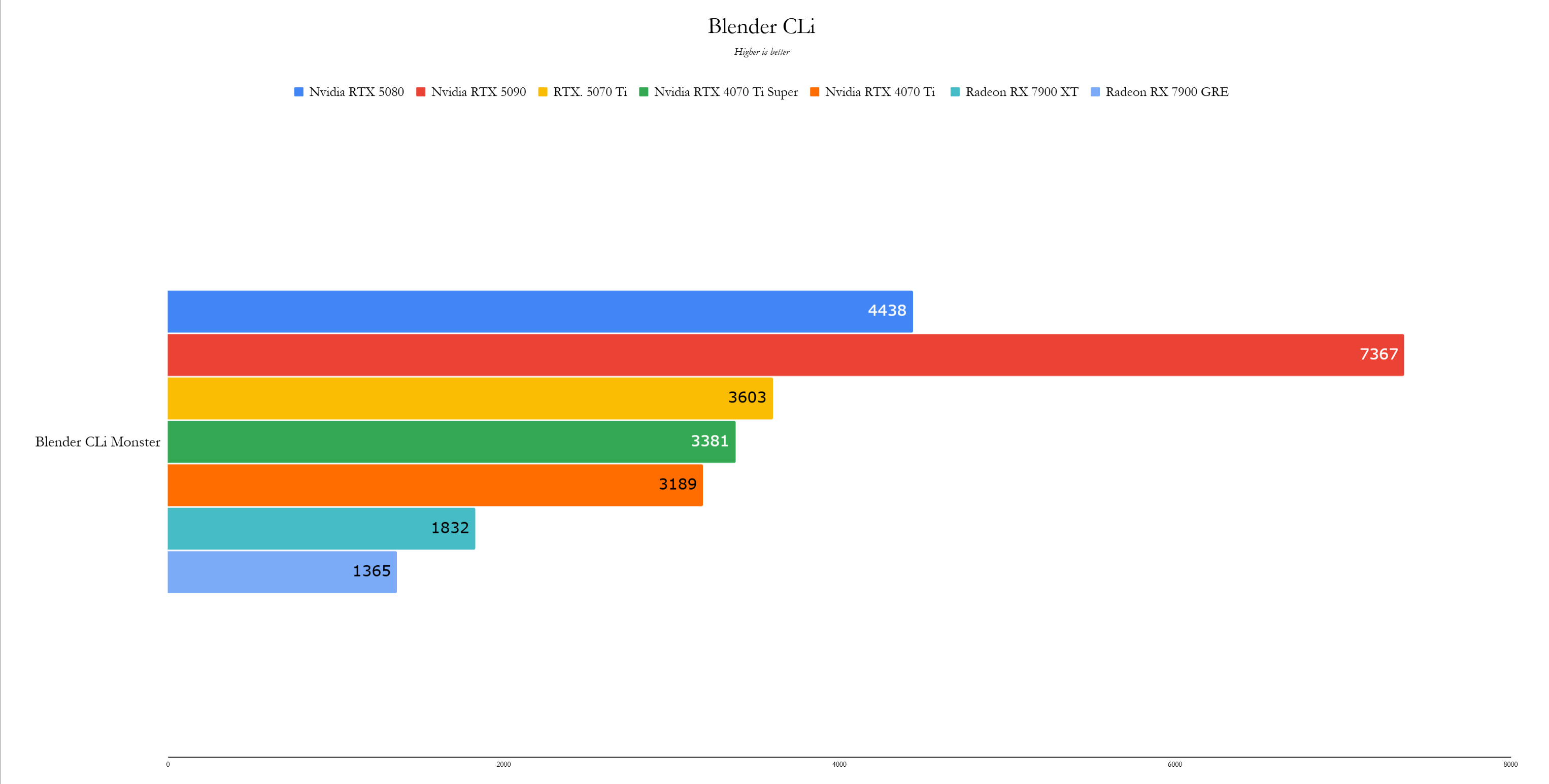
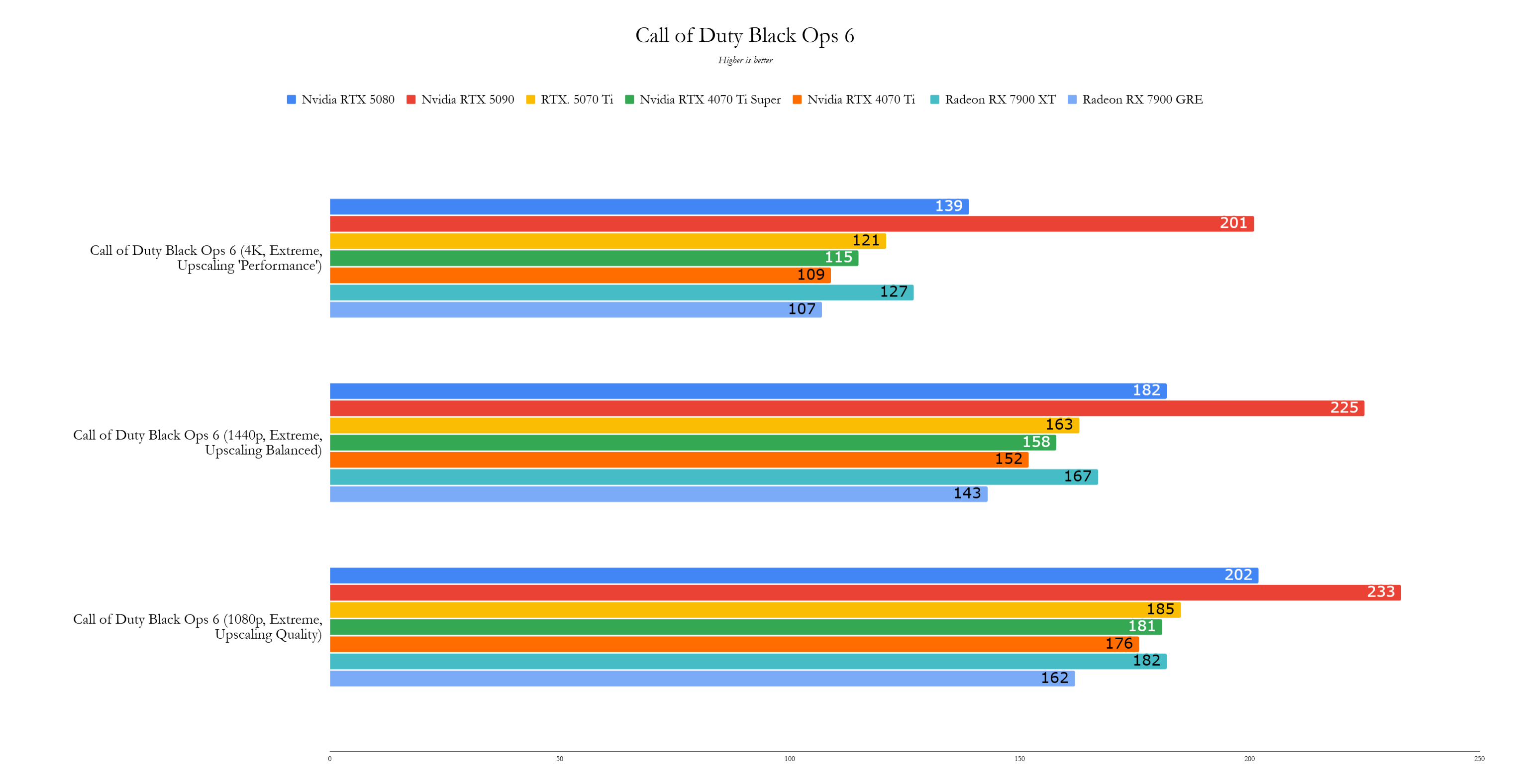
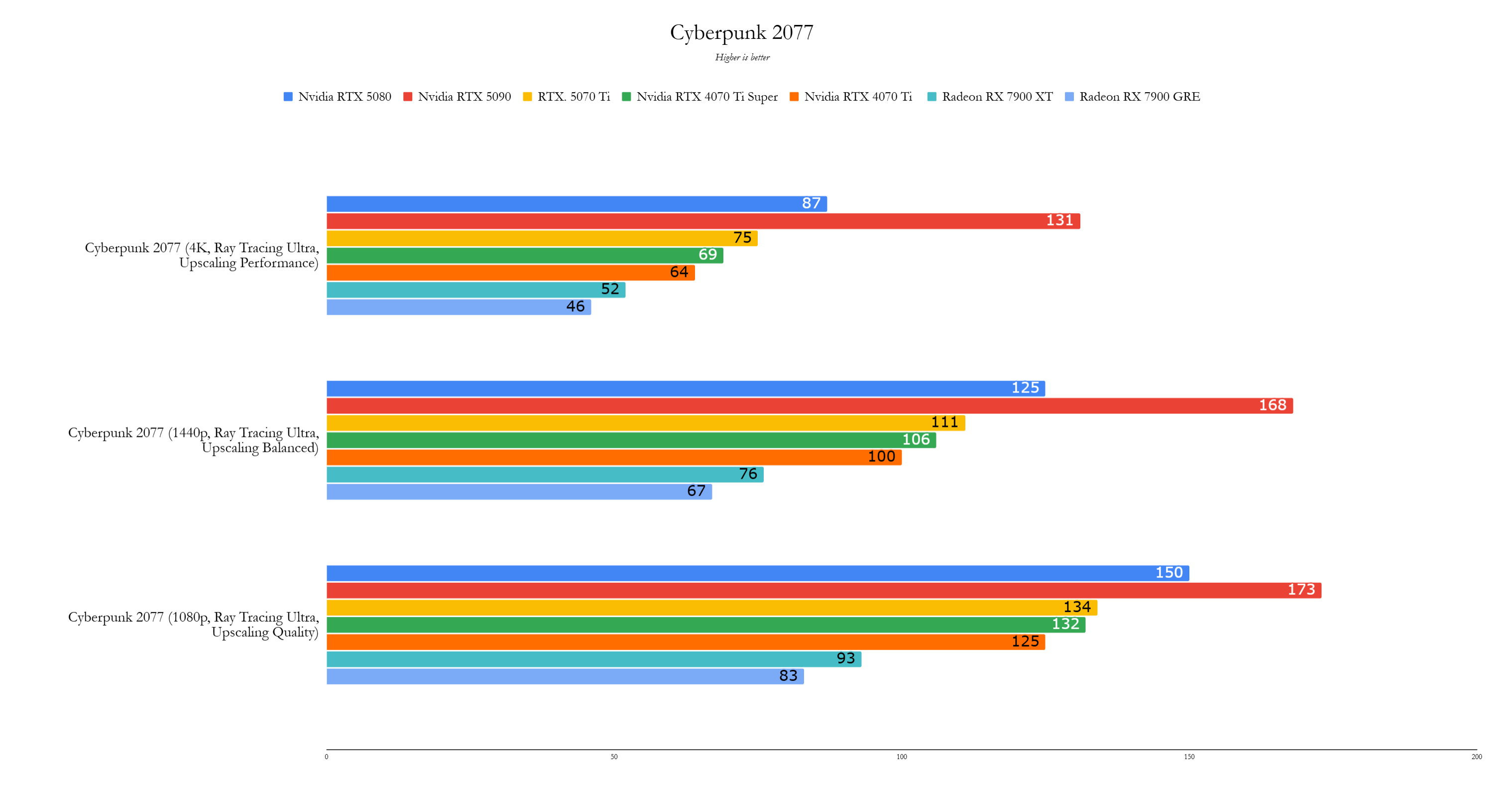
Performance
At 4K, the Nvidia GeForce RTX 5070 Ti outperforms the RTX 4070 Ti Super by about 11% and the RTX 4070 Ti by 21%, offering a more substantial generational improvement than the RTX 5080. This positions the RTX 5070 Ti as the best value graphics card of the current generation, easily surpassing 60 fps at 4K in demanding titles like Black Myth Wukong and Cyberpunk 2077.
The test system used included an AMD Ryzen 7 9800X3D CPU, an Asus ROG Crosshair X870E Hero motherboard, 32GB of G.Skill Trident Z5 Neo RAM at 6,000MHz, a 4TB Samsung 990 Pro SSD, and an Asus ROG Ryujin III 360 CPU cooler. The RTX 5070 Ti was tested at stock settings on the MSI Vanguard SOC model to reflect the performance of the base GPU at its $749 MSRP.
All tests were conducted on the latest game versions and drivers, with the RTX 5070 Ti using a pre-release driver. Frame Generation was disabled, and upscaling was used where supported by both DLSS and FSR.
In 3DMark Speed Way, the RTX 5070 Ti scored 7,590 points, a 19% improvement over the RTX 4070 Ti Super and 36% over the RTX 4070 Ti. In Port Royal, it achieved 18,839 points, showcasing its potential for future performance gains as drivers and games evolve.
In gaming benchmarks, the RTX 5070 Ti showed mixed results. In Call of Duty: Black Ops 6 at 4K Extreme, it achieved 121 fps, a 5% improvement over the RTX 4070 Ti Super. In Cyberpunk 2077 at 4K with Ray Tracing Ultra, it reached 75 fps, a 9% and 17% improvement over the RTX 4070 Ti Super and RTX 4070 Ti, respectively.
Metro Exodus: Enhanced Edition saw the RTX 5070 Ti achieve 48 fps at 4K without upscaling, outperforming the RTX 4070 Ti Super's 45 fps. However, in Red Dead Redemption 2, it was 2% slower than the RTX 4070 Ti Super, though still delivering a high frame rate of 113 fps.
Total War: Warhammer 3, without ray tracing or upscaling, saw the RTX 5070 Ti achieve 78 fps at 4K, a 15% and 30% improvement over the RTX 4070 Ti Super and RTX 4070 Ti, respectively. In Assassin's Creed Mirage, it managed 149 fps at 4K Ultra High, slightly below the Radeon RX 7900 XT's 150 fps.
Black Myth Wukong, a highly demanding game, saw the RTX 5070 Ti achieve 66 fps at 4K with the Cinematic Preset and DLSS at 40%, a 10% improvement over the RTX 4070 Ti Super. In Forza Horizon 5 at 4K Extreme, it reached 152 fps, a 15% and 21% improvement over the RTX 4070 Super and RTX 4070 Ti, and a 10% lead over the Radeon RX 7900 XT.
In today's market, even mid-range graphics cards are capable of delivering 4K performance. At its base price of $749, the Nvidia GeForce RTX 5070 Ti offers the best value for money, especially for those with 4K displays. It not only provides a significant performance uplift over its predecessor but does so at a lower price than the $799 RTX 4070 Ti.
























![Salvation in Nightmare [v0.4.4]](https://imgs.21qcq.com/uploads/36/1719555347667e551321c26.jpg)




